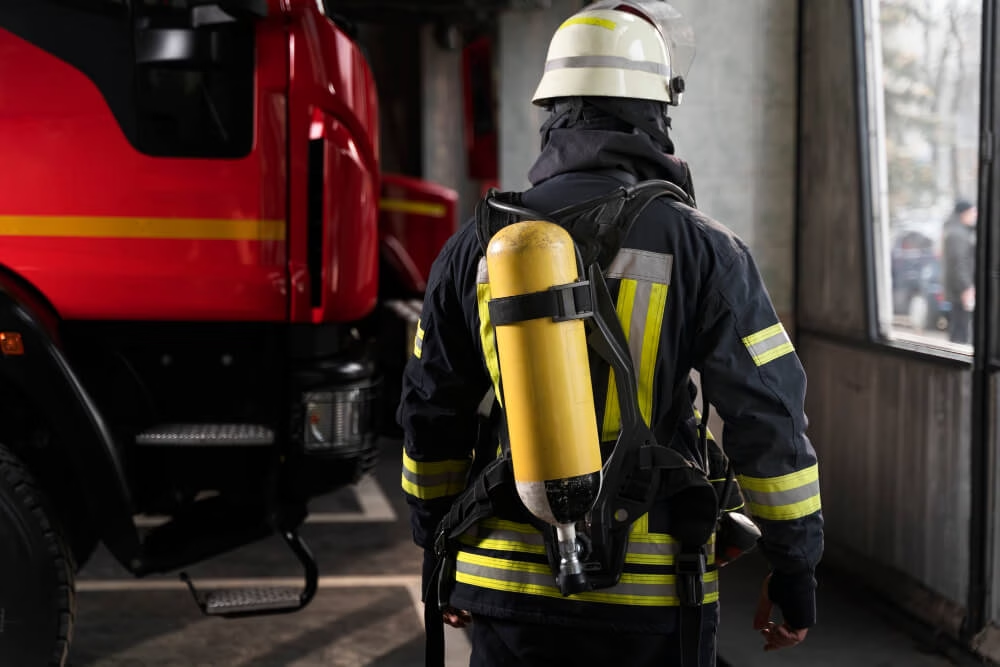When it comes to fire safety, having the right fire extinguisher on hand can make all the difference. But not all fires are the same—and neither are the extinguishers used to fight them. Whether you’re a homeowner, business owner, or property manager in Los Angeles, knowing the different classes of fire extinguishers is essential for protecting your property and ensuring safety.
Understanding Fire Classes
Fires are categorized based on the type of fuel they involve. Each class of fire requires a specific type of extinguisher designed to combat it safely and effectively.
Class A – Ordinary Combustibles
What it covers: Fires involving wood, paper, cloth, trash, and plastics.
Best extinguisher type: Water-based or multipurpose dry chemical extinguishers labeled “A.”
Where it’s most common: Homes, schools, and offices.
Class B – Flammable Liquids
What it covers: Fires caused by gasoline, oil, paint, alcohol, and other flammable liquids.
Best extinguisher type: CO₂ or dry chemical extinguishers labeled “B.”
Where it’s most common: Garages, workshops, gas stations, and industrial settings.
Class C – Electrical Equipment
What it covers: Fires involving electrical panels, appliances, or wiring.
Best extinguisher type: Non-conductive extinguishers such as dry chemical or CO₂, labeled “C.”
Where it’s most common: Offices, data centers, and homes with heavy appliance use.
Class D – Combustible Metals
What it covers: Fires involving magnesium, titanium, potassium, and other reactive metals.
Best extinguisher type: Specialized dry powder extinguishers labeled “D.”
Where it’s most common: Laboratories and industrial manufacturing facilities.
Class K – Cooking Oils and Fats
What it covers: Fires caused by cooking oil or animal fat, especially in commercial kitchens.
Best extinguisher type: Wet chemical extinguishers labeled “K.”
Where it’s most common: Restaurants, commercial kitchens, and sometimes in home kitchens.
Combination Fire Extinguishers
Many modern fire extinguishers are labeled ABC, meaning they are effective against Class A, B, and C fires. These are ideal for residential or general commercial use.
California Fire Safety Standards
In California, fire codes require that commercial properties—including apartment complexes, restaurants, and office buildings—maintain proper fire extinguishers on-site. In Los Angeles, local codes are enforced by the Los Angeles Fire Department (LAFD), and compliance is regularly inspected.
Key state and local requirements include:
Proper placement within 75 feet of travel distance
Annual maintenance and inspections
Certification tags for commercial-grade extinguishers
Failing to meet these standards can result in hefty fines—or worse, unsafe conditions during emergencies.
Why Fire Extinguisher Education Matters
Many people assume one extinguisher fits all, which can be a costly and dangerous mistake. For example, using a water-based extinguisher on a grease or electrical fire can make the situation worse. That’s why it’s critical to:
Identify fire risks in your space
Choose the correct extinguisher type
Train yourself and your team on proper usage
When to Call Professionals
While having fire extinguishers on hand is a must, Advanced Restoration & Construction strongly recommends professional fire risk assessments, especially for commercial properties in Los Angeles. Our team provides:
Site-specific fire safety evaluations
Fire damage restoration services
Emergency response planning
Code compliance assistance
Final Thoughts
Knowing the different classes of fire extinguishers isn’t just good safety practice—it’s a necessity. Being informed empowers you to act quickly and correctly during an emergency. And when disaster does strike, you can rely on Advanced Restoration & Construction to restore safety and peace of mind in your Los Angeles home or business.
Faqs
ABC extinguishers are not ideal for kitchen grease fires. Use a Class K extinguisher for cooking oil fires to prevent splashing or flare-ups.
Yes. Most extinguishers should be replaced or professionally serviced every 5–15 years, depending on the type.
Perform monthly visual inspections and annual professional checks to ensure functionality.
Yes. Commercial properties must comply with California Fire Code and LAFD regulations regarding fire extinguisher maintenance and inspections.

